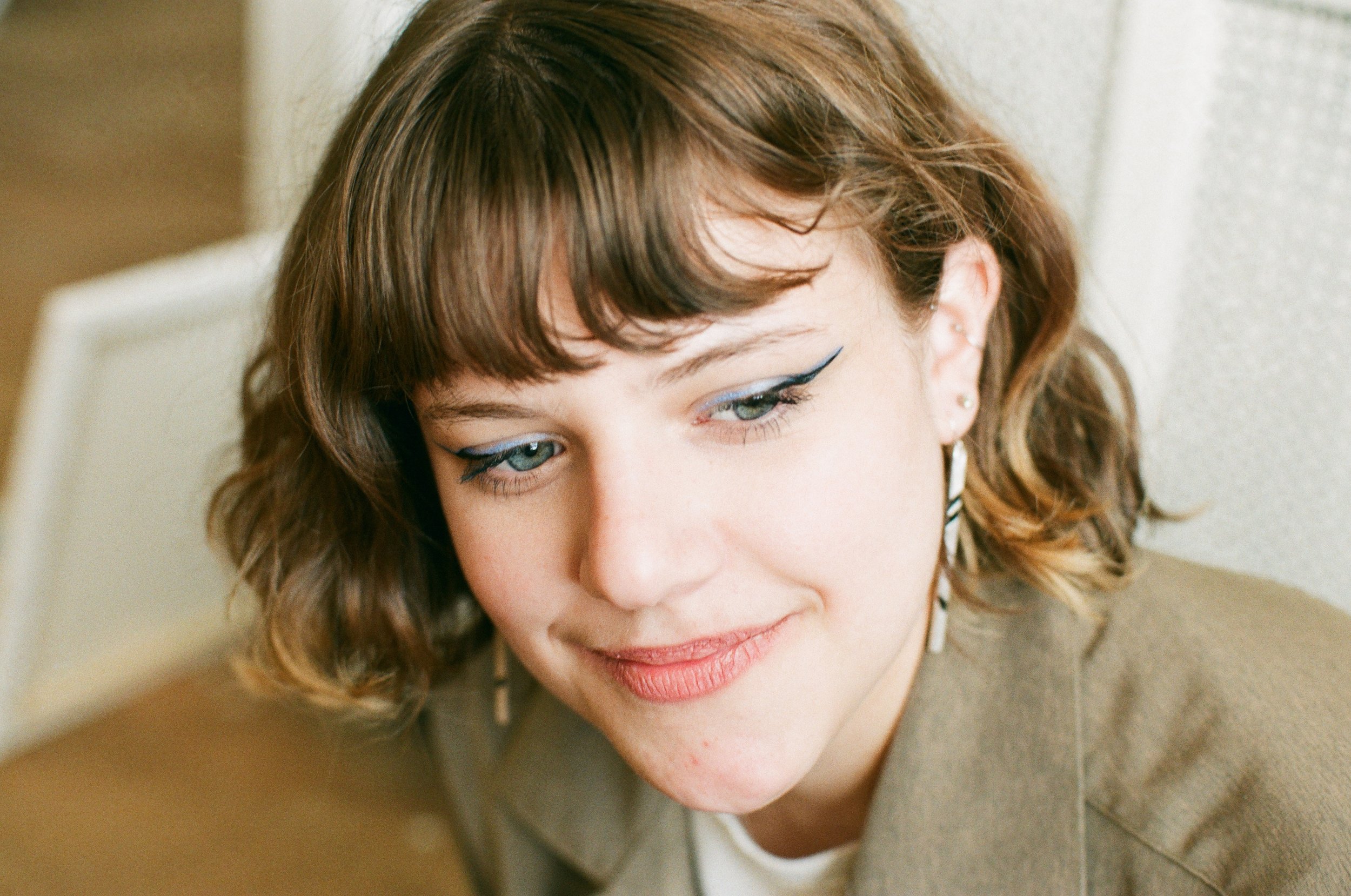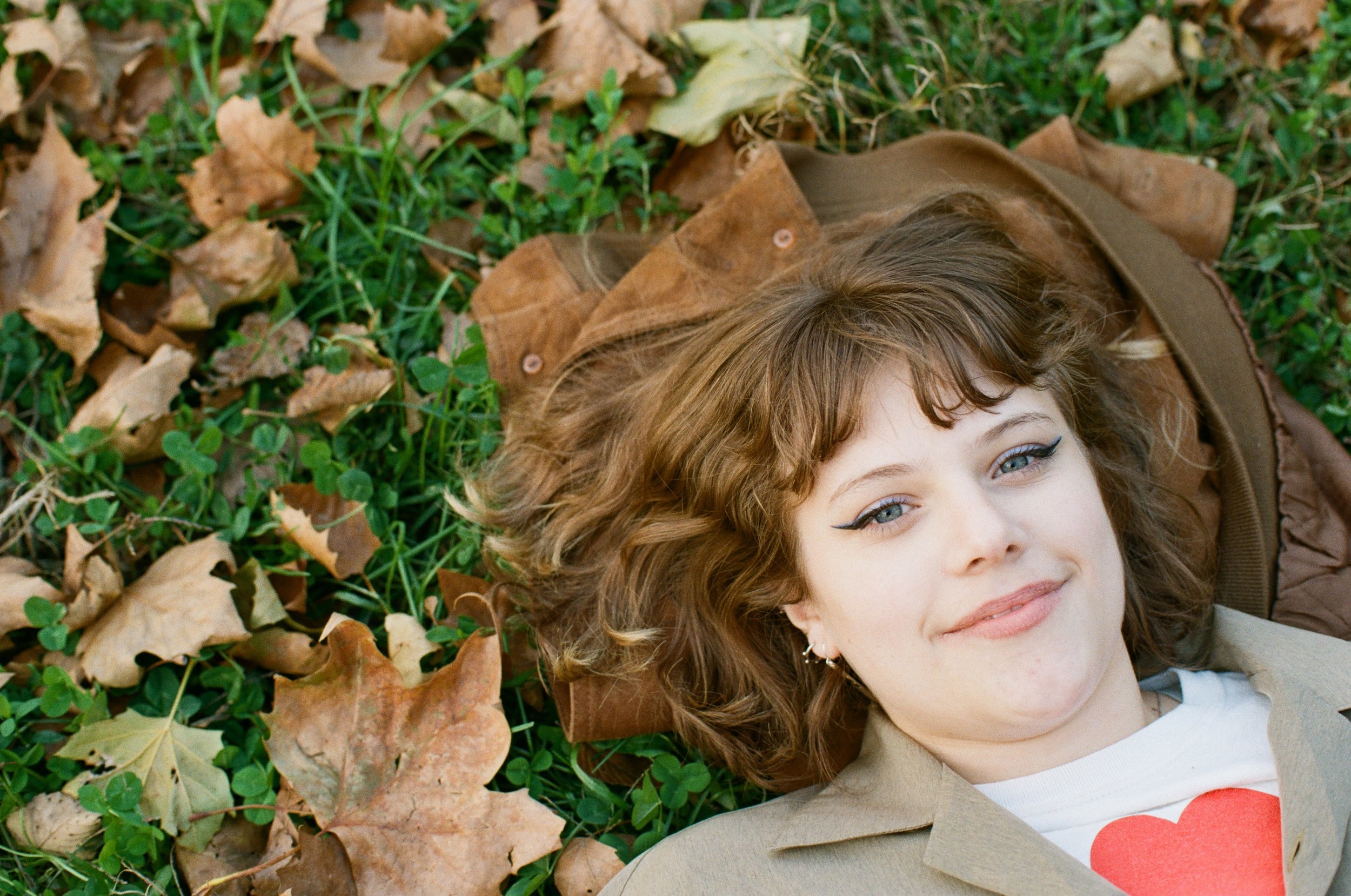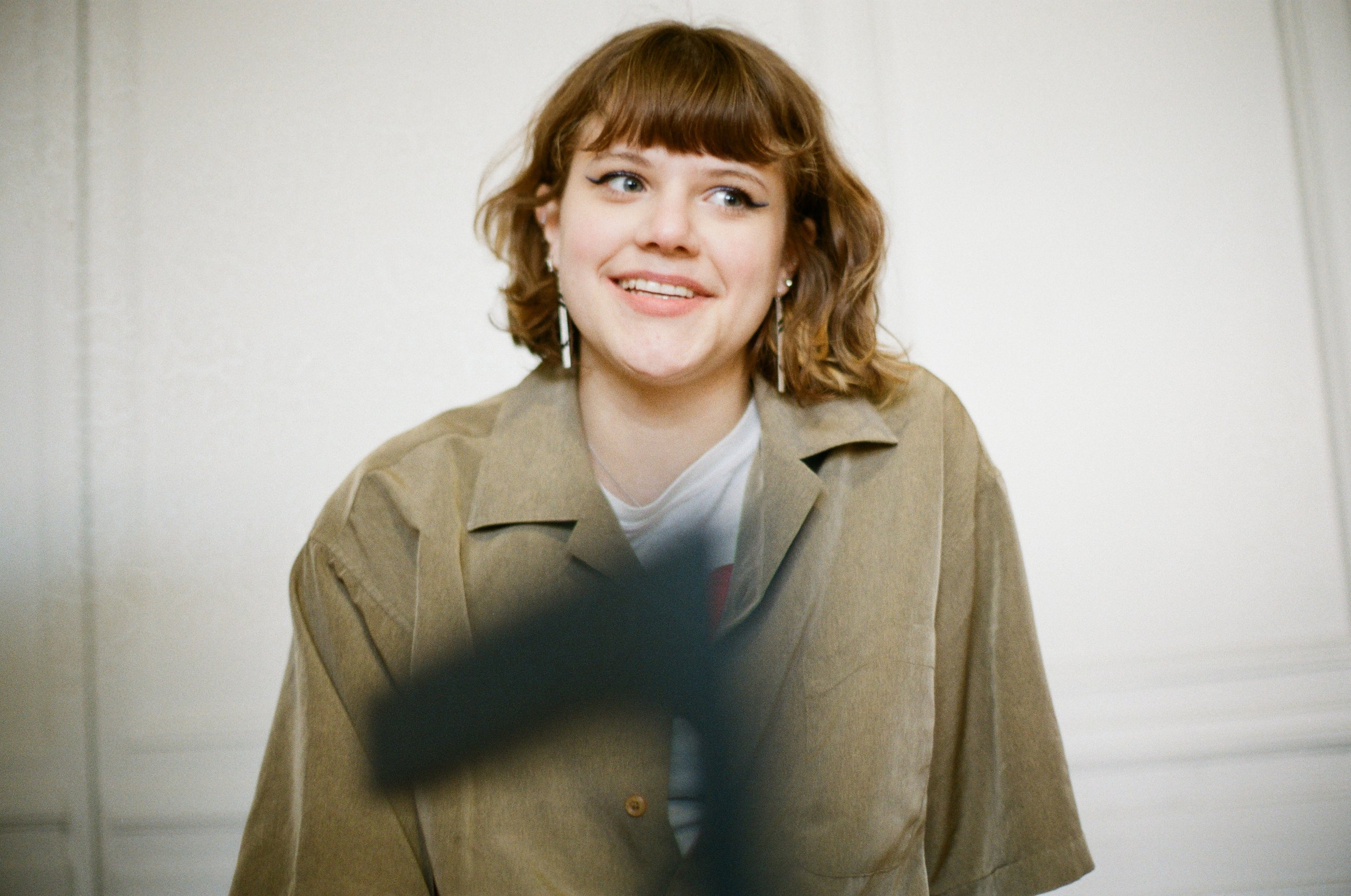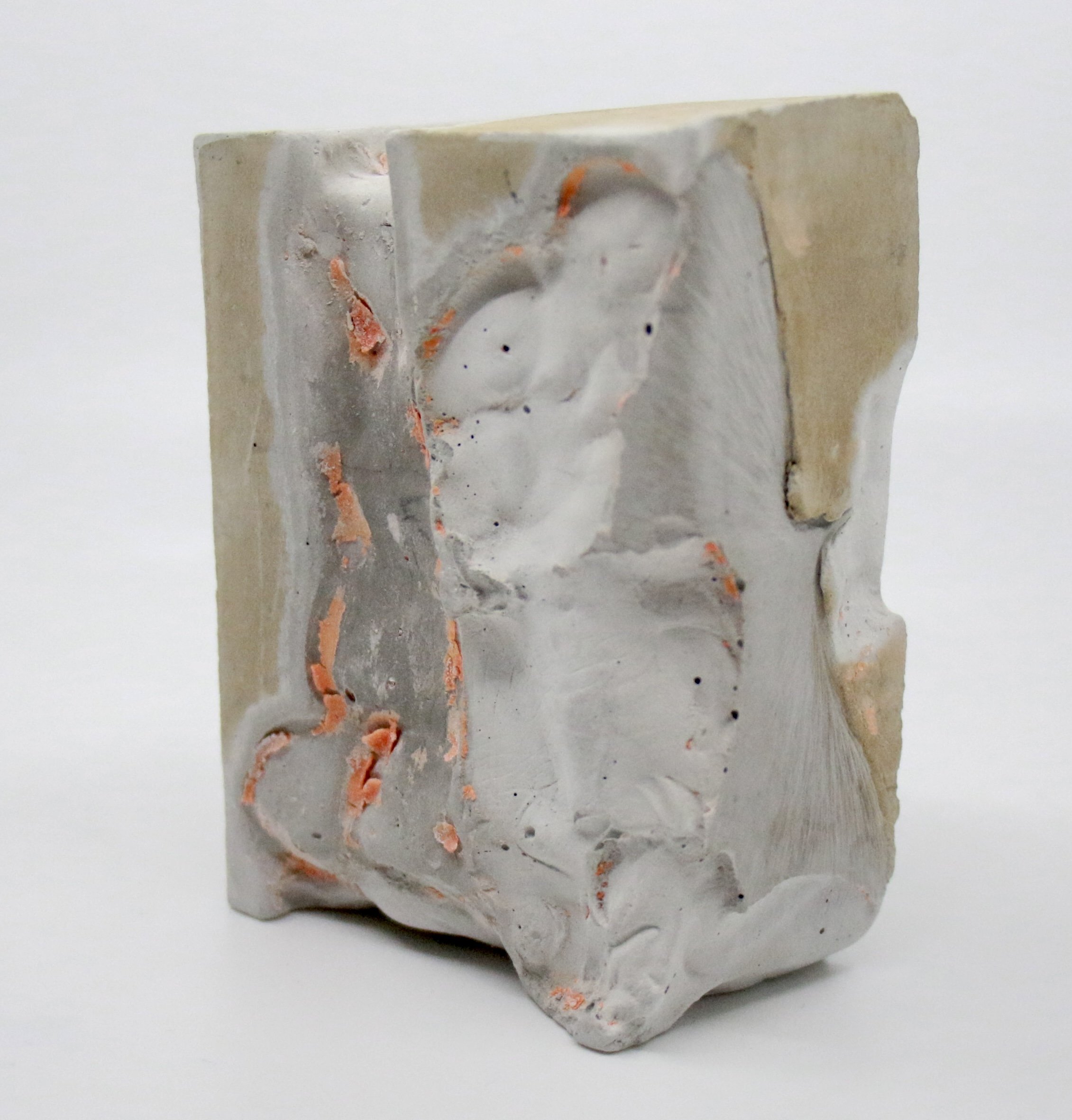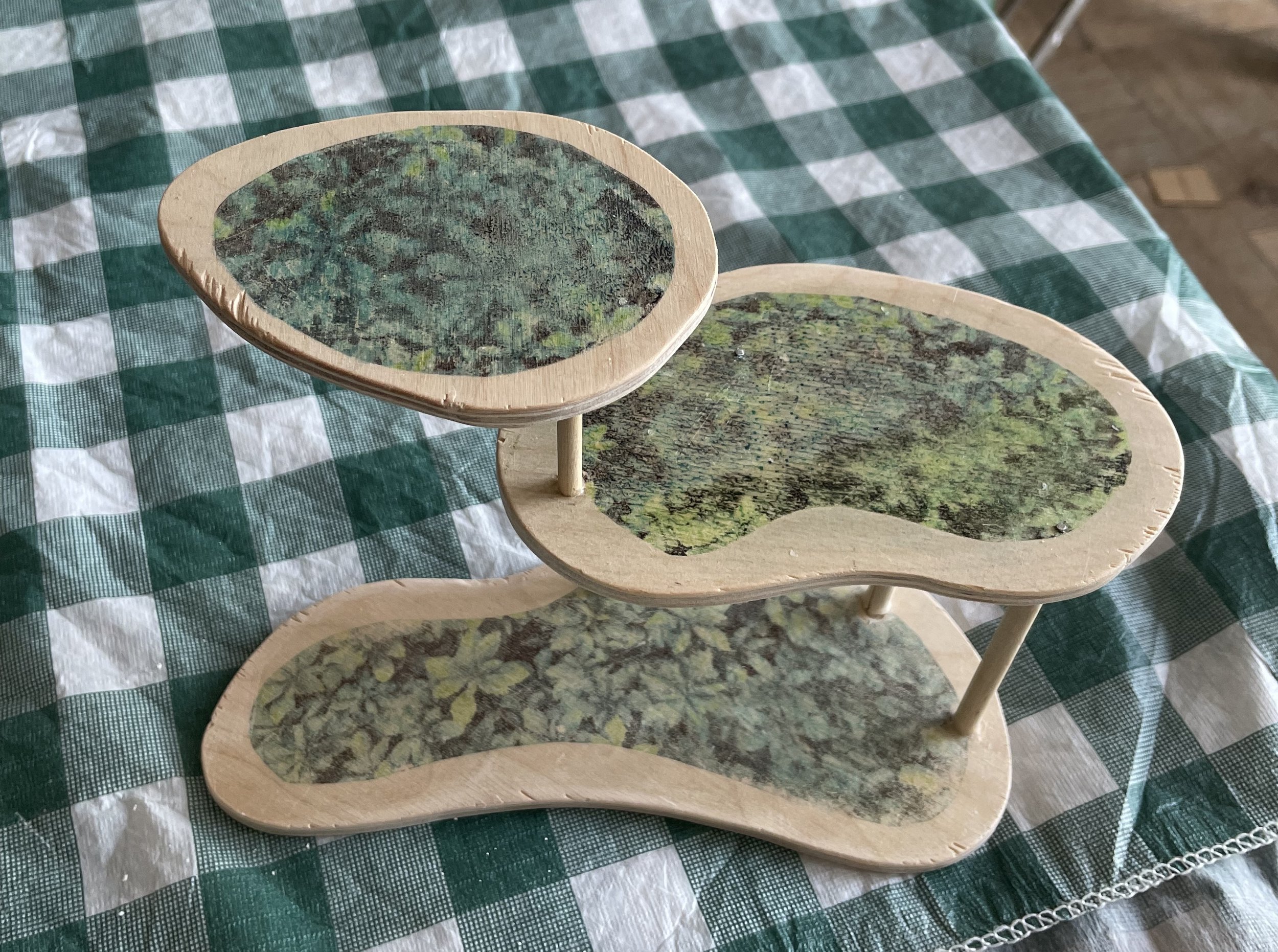Feature by Iker Veiga
Photos by Adela Schwartz
Alison Siegel is a conceptual artist based in New York City, from Denver, CO, studying Art History and Visual Arts at Barnard College. Alison considers their studio a laboratory in which they incorporate unorthodox organic and geological materials into their experimental photographs, sculptures, and installations. Today we discussed the scientific method, growing up, and going back to our roots.
Can you tell us about your first memories making art?
Oh man… I don’t know of a particular first memory of making art. I think it has always been there. Ever since I was a little kid I loved to tinker with rubber bands and paper clips, because I loved to play with my hands, making my own pulley systems and bringing things up the stairs of my home. It isn’t necessarily fine arts, but I have always been driven to create.
How does that playfulness translate into your craft?
I think about what it means to be an adult a lot. Do you have to lose your imagination and stop having fun? A lot of people suppress their silliness, their play, and because of this, it is really important for me to explore those aspects. I don’t think creativity should die as we grow up, even though everything feels bleak sometimes. In the last few years I have lost a lot of people, and I have gone through a lot of grief and mourning. When I look into my art, I see it, even if I do not intend to put it there. Although there is a palpable tension between the playful and the more serious components of my work, I do not consider my playful approach to art as escapism, but as an outlet for the most serious aspects of my life. Through my projects, I do a lot of healing, and it is interesting to see how my work can convey all of this.
MINE, 2022
What does your art tell us about your personal story?
I am from Denver, a big city, but I was lucky enough to grow up being able to go skiing or hiking very often. It is something really important to me, and I feel spiritually connected to (especially) the Rocky Mountains: I feel most at home in the woods. Coming to Barnard, I became aware that not a lot of people in the city have the same connection to nature that I have. There is still nature in the city, but it is not the same. In natural, unspoiled ecosystems, trees form mycorrhizal connections through the fungi in their roots and send messages to other trees through these networks. When you’re in a forest with an active network that is living to its full potential, you feel that. And the trees in the city feel really lonely and disconnected. My art explores how I coexist with that loneliness.
“When you’re in a forest with an active network that is living to its full potential, you feel that. And the trees in the city feel really lonely and disconnected. My art explores how I coexist with that loneliness.”
Whisper of a Leaf
Can you talk more about how nature influences the ideas in your art?
In Boundaries/Containment I was studying how we tend to categorize nature, contain it, and pick it apart: how borders construct the pieces of a transcendental whole. My Self-Portrait includes flowy shapes that are grounded on a human silhouette. It is easy and comforting to simplify things, but it can also detract from the complexities of life. This Self-Portrait was inspired by a podcast (I can’t remember which one) in which two scientists were speaking about how the biggest lie we tell ourselves is that we are one thing. We are just a ton of systems working together to produce what we call the cell. We think we are whole but in reality we are many multitudes and fragments. I believe that we don’t talk enough about how arbitrary the boundaries we set within ourselves and others are. What we can understand about the world is really limited to the physical input we receive through the five senses, but a lot goes on beneath the surface, where chaos reigns.
Boundaries/containment
Selfportrait
Your scientific background is really influential in your pieces. How do you incorporate the scientific method to create art?
I have a lot to say about the scientific method… I hate it! But I also appreciate it, because of how it standardizes experimentation. But I don’t know that it is always super helpful. Even though I experiment a lot with cements and plasters, I never have a hypothesis. I just go for it without a guiding question, which is really fun. Both art and science require a lot of imagination and thinking outside of the box, but science is much more of a linear process. And I have never been a linear person. So I have a lot of fun using the framework of an experiment, but being flexible and having fun with my pieces, rather than confirming a theory.
That said, my background in Biology and Chemistry does translate to my organizational research skills, and my pieces are influenced by essays or journals that I read and theories that I am exposed to in my classes. For example, I took this really amazing class with Ralph Ghoche called City, Landscape, Ecology which mostly focused on Western Land Management, specifically in the United States. It was an interesting way of seeing how our modern view of cities, nature, and societies came into being.
This is how my project Concrete Jungle first started: as a collection in which I began to think about environmental justice. There is an incipient tension between lines and curved shapes that parallels moments I noticed in the city: trees breaking through concrete or bricks, flowers growing on the asphalt… One particular piece, Marshall, has an almost human-like effect to it. I like to think of the materials I work with not necessarily as human lives, but not as dead either.
Marshall
In what way do you question these moments, or traces of nature in the city, and use them to advocate for environmental justice?
A lot of what I am working on now only started last year, and is still in development. So I’m not sure about the role my art plays in climate justice advocacy, but I do like to raise awareness about it– I wish my work did that more. I just love the freedom of audience interpretation of my work, and presenting my pieces as facts would make the relationship of the viewer to my art very stiff.
Therefore, instead of directly advocating for a change, I think a lot about how to reimagine spaces, and how to reimagine my own interactions with nature in the city. There is something fascinating about that to me–how human society has been constructed to be opposed to nature. There is a huge binary opposition that we all grew up accepting and is not true: things grow and live around us constantly, in weird moments relegated to cracks, sidewalks…
Not long ago, I started to notice that a lot of garden beds and landscaping choices have hedges that are really flattening, especially on campus; Columbia has a really aesthetic landscape on purpose, exemplifying the idea that you can manipulate plants and that gives you power as an institution. On the other hand, if you walk around 135th and Broadway and look at the plant beds up there, they are not as kempt. My intention is to make the viewer notice these differences, not necessarily as an act of intervention, nor as a challenge of the status quo.
Cambria
How do you emphasize the impact of human activity on the environment through your art?
Pieces such as Metropolitan Garden represent nature as a negative space engraved in cement, a fragment of our landscape frozen in time, referencing beautifully groomed plants or the fruit and vegetables in grocery stores, and how they have to be perfect looking and ready for human consumption. It points to the control humans exert over nature and how we attempt to have power over things that are so complex. It is an eerie piece, the essence of a leaf but not one.
I started to work with concrete because it is a disgusting material. Its production is responsible for 8% of the world’s CO2 emissions, producing about 0.9 pounds of CO2 for every pound of cement. By working with it I wanted to think about how we incorporate recycling or circular economy principles into an industrial infrastructure.
There has to be a pretty serious philosophical shift in how we treat the materials we construct things out of and our understanding of nature, and how humans associate with each other in cities. And I think art can really facilitate that, making concepts around climate change that are petrifying accessible. It really helps you to think beyond what exists.
A lot of people avoid these topics because they are extremely overwhelming. But that is part of the game. How can people reengage with these topics to change the status quo? Individuals having conversations about climate change is the first step: this leads to small structural change, whether it’s setting up recycling programmes, or creating Goodwills where good stuff won’t be thrown out.
Metropolitan Garden
How do you want people to re-engage with your art and these topics?
A lot of artists strive to achieve a moment of full connection with their viewer. I don’t, actively. I don’t even care what they think about it, they can be like “that’s so weird” or “that’s so cute” and that’s OK! At this point I am desensitized to how people may react. But I do enjoy hearing the connections people make, even if they were not intentional. I want to create art that brings concepts that would normally not coexist together in an unexpected way. I want my art to foster curiosity and imagination in viewers.
I think of everything I do and each media in the same way, which made me realize that I was a conceptual artist. To me, everything is a composition which is completed by the effect it has on my audience. There is a tactile aspect to my art that I find really important. In spite of growing up surrounded by technology, I have always felt like an old soul, and it terrifies me that we are completely moving into these abstract environments where everything is digitalized. There is a lot of the human experience that is completely lost by fully engaging with those worlds. What I was thinking about when making Concrete Jungle is that I wanted people to play with it. I remember once I laid the pieces on my studio desk and invited my classmates to “play with them” and it was fun to see. There is something really nice happening in the body when it is exposed to different textures, how different parts of our brain are activated.
I also resent the gallery space (that stupid cube) and the idea that you can’t touch anything in a museum. I understand that some fine arts works are meant to be seen, but I am curious about what art can do to actively engage people. I want to emphasize the need to stay open and imaginative as a key part in any process: making art, writing a paper, maintaining a friendship with somebody… We need to find more moments to slow down and reconnect. Beyond classroom spaces, people are always afraid to touch my objects. And I’m like “Please! I’m serious!”, because it is OK; it is a part of the object: they have a history of their own too.
Urban Recreational Design
Thank you so much for talking with us today! Where can we find your work and stay updated?
You can follow my Instagram page, @alison_siegel!































